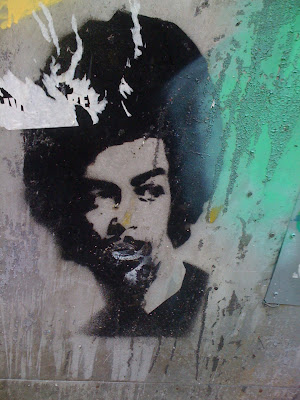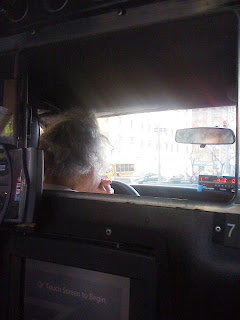The Revolution WAS in Tribeca

Gil Scott-Heron in Manhattan, 2012, from the cover of his 1971 studio debut album Pieces of a Man. Walking down Lispenard Street a week or so ago, enjoying the perfect blue-sky, just crisp September Sunday, I caught this portrait of Gil Scott-Heron. Wondered why the unknown artist who created the image chose that spot to showcase the man who told us the revolution will not be televised . The fact that the Arab Spring uprisings were not only televised but thrown worldwide on the Internet notwithstanding (and to be fair, Scott-Heron was making a different point, and a fresh one in 1970 on his live debut album Small Talk at 125th and Lenox ), there was no revolution, no uprising going on here in Tribeca yesterday. Just a steady stream of tourists buying knock-off designer purses and other goods and trinkets on Canal Street, a lot of sky-high real estate that the 99 percent can't afford, and aside from the denizens of Chinatown and the African street vendors on Broadway and Li



